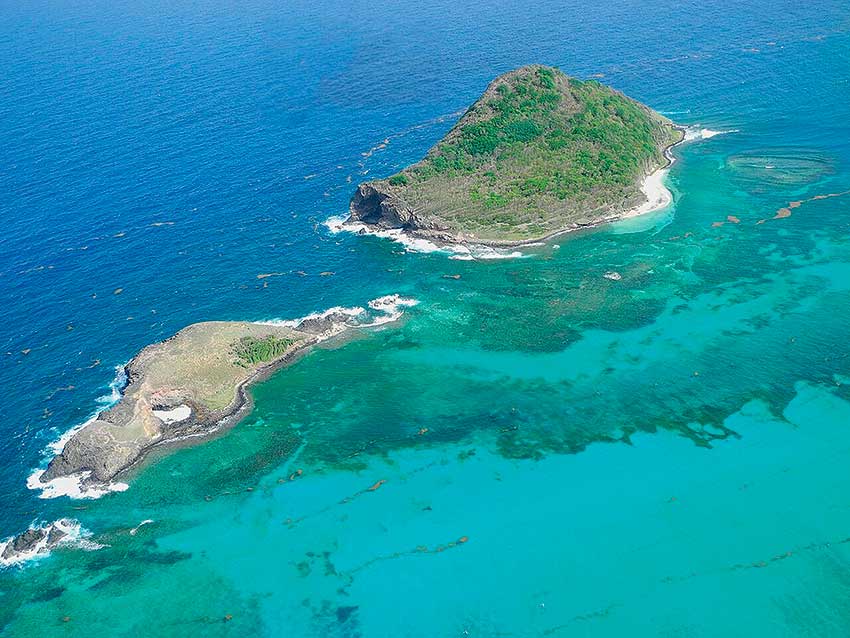I have been reading with great interest and concern reports surrounding certain developments in St. Lucia which, according to various persons, would endanger our indigenous plant and animal species on our island.
I presume that the disquiet has come about as a result of proposed published information related to certain developments in the south of the island. I will confine myself to this area of concern.

No one should dispute that our Maria Islands are known for their indigenous animals and plants which must be preserved as part of our patrimony. Nevertheless, from published drawings and information presented in our local and regional press, there appears to be a proposal that the islands are to be linked to the mainland by a causeway with high rise buildings and an industrial complex.
I have since been informed that the conceptual drawings do not represent the formulation government plans for that area. I, too, was alarmed by what was published and can appreciate the grave concern being expressed by certain sectors of our communities for the conservation and preservation of our indigenous plants and animals should always remain paramount in our development exercises.
As a founding member of our St. Lucia National Trust, I feel it is incumbent upon all of us to assure that the integrity of our indigenous flora and fauna are respected and conserved as part of our patrimony.
I recall very well that while I was a Senator in the Government, we were successful in preserving our Green Parrot from extinction through the passing of sound legislation and the application of science and technology, the breeding of our exotic national bird overseas and their release to their national habitat.
It is my view that a similar exercise with appropriate modifications could be put in place related to the plants and animals on our Maria Islands. This type of exercise has been put in place in other countries dating to the preservation of species from the time of Charles Darwin.
I am of the view that it is possible to link human and economic development with the preservation of indigenous species. There are regional and international institutions which have achieved this balance. We can learn from them as part of our integrated development programme in the south of our island.
St. Lucia could become once again an example of a success story in this area in much the same way in which we successfully preserved our Green Parrot.
Our government will have to more fully explain its intent in this regard to achieve this through a sustained management plan with sound scientific and preservation exercises.
In this context, I was pleased to read that our government is committed to the “preservation and conservation” of Maria Islands with proposed technical assistance and management expertise from friendly countries and inputs from our local population.
I was also pleased to learn that an “all-inclusive non-partisan group” has been formed to protect our patrimony in this regard.
Both of these statements published in our local press — the expressions of our government and the intent of the all-inclusive and non-partisan group — are encouraging. I go further to suggest that our Maria Islands could become a living laboratory for the study and implementation of sustainable eco-system development on a small island scale with regulated observation points and studies in ecosystem preservation and development juxtaposed economic development.
In passing, I should mention that our indigenous nematode Longidorusedmunsi was discovered in the south of our island and is now preserved in the United Kingdom. It was George Odlum who published in the Crusader newspaper that Dr. Edmunds had been immortalized with embalming oils. Fortunately, I am still alive. I look forward to the return of the specimen to St. Lucia where it can be displayed in the south of the island where it belongs.
The south and other parts of our island could well become centres for environmental studies and effective micro-systems for development provoking the creative minds of our budding young scientists and developers.
Like in the more developed countries, it is possible to blend economic development with conservation. It is worthy of note that the 2010-2020 plan of the National Trust includes increasing economic growth through heritage tourism as a lead advocate for heritage and environmental issues.
It is, therefore, incumbent upon the institutions mentioned above to get together with the intent of seeking our social and economic development while at the same time preserving our national heritage through conservation in its various expressions. Other countries are doing it. So can we.
[Dr. Edmunds is a Former Ambassador of St. Lucia to the UN, OAS, and US, Former Research Fellow, UWI St. Augustine Campus, Former Director of Research and Development of WINBAN, Founding member of The Saint Lucia National Trust, and Founding member and Patron of The National Research and Development Foundation.]













